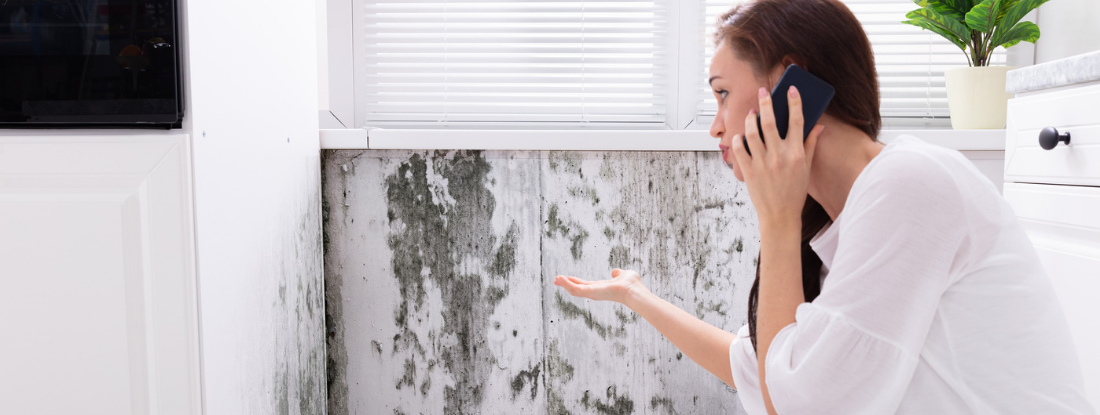
Mold is a persistent problem that can grow in homes and buildings any time of the year, but certain seasons are more conducive to mold growth than others. Factors such as humidity, temperature, and the likelihood of water intrusion all play a role in when mold is most likely to become an issue. Knowing the best time to schedule a mold inspection can help you catch mold early and prevent costly damage to your property and health concerns for its occupants. Here's a guide to understanding the ideal timing for mold inspections and tips for each season.
Spring: A Prime Time for Mold Growth
Spring is one of the most critical times to schedule a mold inspection. As the weather warms up, snow and ice melt, often leading to an increase in moisture levels around your property. Rainfall also tends to be more frequent in the spring, which can create leaks or seepage into basements, crawl spaces, or attics. Mold testing Los Angeles spores thrive in moist, humid environments, and spring provides the perfect conditions for their growth.
Additionally, homes that have been closed up during the winter may experience poor ventilation, further contributing to moisture buildup. If your home has experienced any water damage during the winter months or spring rains, it's crucial to schedule a mold inspection to ensure mold hasn't started growing behind the scenes.
Spring Mold Inspection Tips:
Inspect areas that may have been affected by melting snow, such as basements and exterior walls.
Check your roof, gutters, and downspouts for any signs of water damage or leaks.
If you notice musty smells or increased humidity, arrange an inspection immediately.
Summer: High Humidity, High Risk
Summer is another season when mold thrives, especially in regions with high humidity. The combination of warm temperatures and elevated moisture levels can create a perfect breeding ground for mold. Air conditioning systems, if not properly maintained, can also contribute to mold growth by allowing condensation to accumulate in vents or ducts.
Because people tend to use their HVAC systems more frequently in the summer, it's a good idea to have your air conditioning system inspected for mold, particularly in areas where water tends to collect, such as the condensate pan or drip lines. Additionally, bathrooms, kitchens, and laundry rooms, where moisture levels tend to be high, should be checked for signs of mold during the summer.
Summer Mold Inspection Tips:
Schedule an HVAC system checkup to ensure condensation isn't causing mold in ducts or vents.
Keep an eye on rooms with high moisture levels, such as bathrooms and basements.
Use a dehumidifier in damp areas to control humidity levels.
Fall: Preparing for Winter Dampness
Fall is an important time to conduct a mold inspection, especially as the weather turns cooler and wetter. Falling leaves can clog gutters, leading to water backups and leaks in your home. Additionally, with the increased rain during the fall, homes are more prone to leaks, especially around windows, doors, and roofs.
Fall is a great time to inspect your home for any vulnerabilities that could lead to water intrusion during the colder months. Addressing potential mold issues in the fall can prevent problems from worsening during the winter when conditions for remediation may be more difficult due to freezing temperatures.
Fall Mold Inspection Tips:
Check your gutters and downspouts to ensure they are clear and directing water away from your home.
Inspect your attic and roof for any leaks or water damage.
Seal windows and doors to prevent moisture from entering during rainy weather.
Winter: Monitoring Indoor Mold Growth
Winter tends to be a less active season for mold growth outdoors, but indoor mold can still be a problem, particularly in homes that are poorly ventilated. As homes are sealed to conserve heat, moisture can build up inside, creating the perfect conditions for mold. Bathrooms, kitchens, and basements are particularly at risk during the winter months due to humidity from daily activities like showering, cooking, or using laundry appliances.
Although inspections in the winter may not focus on outdoor areas as much, indoor inspections are still essential to ensure your home remains mold-free, especially if there is poor air circulation.
Winter Mold Inspection Tips:
Pay close attention to areas of high indoor moisture, such as bathrooms and kitchens.
Ensure proper ventilation throughout your home, especially in rooms prone to condensation.
Check for any signs of leaks or moisture buildup around windows and doors.
Conclusion: Timing Matters for Mold Inspections
While mold can grow year-round, understanding seasonal patterns helps in scheduling the most effective inspections. Spring and summer are prime times for mold growth due to high moisture and humidity, while fall presents an opportunity to prepare for potential winter problems. By scheduling regular mold inspections based on seasonal factors, you can protect your home, your health, and your wallet from the costly and damaging effects of mold.





